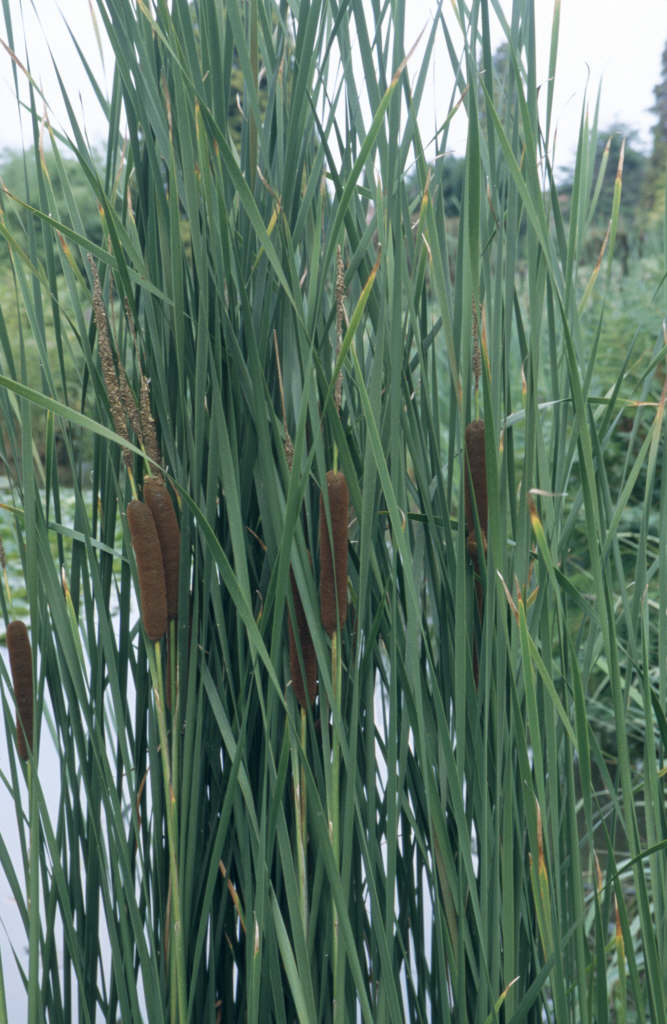Typha angustifolia
lesser bulrush
A spreading, deciduous perennial forming an extensive stand of long, arching, linear leaves, with cylindrical brown flower-spikes on erect stems in summer
Synonyms
Typha gracilis Rchb.
Buy this plant
Size
Ultimate height
1–1.5 metresTime to ultimate height
5–10 yearsUltimate spread
2.5–4 metresGrowing conditions
Moisture
Poorly–drainedpH
Acid, Alkaline, NeutralColour & scent
| Stem | Flower | Foliage | Fruit | |
| Spring | Green | |||
|---|---|---|---|---|
| Summer | Brown | Green | ||
| Autumn | Green | |||
| Winter |
Position
- Full sun
Aspect
South–facing or West–facing or North–facing or East–facing
Exposure
Exposed or Sheltered Hardiness
H7Botanical details
- Family
- Typhaceae
- Native to GB / Ireland
- Yes
- Foliage
- Deciduous
- Habit
- Tufted
- Genus
Typha are deciduous, rhizomatous perennials from marginal aquatic habitats, with long strap-shaped leaves and characteristic dark brown, cylindrical flower spikes in summer
- Name status
Correct
- Plant range
- Temp. N. Hemisphere
How to grow
Cultivation
Grow in water up to 40cm deep with deep mud. Root system may puncture pond liners, and in shallower water may spread rapidly, with the potential to become a nuisance if not managed well. See pond plants and bog gardens for further advice
Propagation
Propagate by division of rootstock in spring
Suggested planting locations and garden types
- Wildlife gardens
- Wildflower meadow
- Low Maintenance
- Cut flowers
Pruning
Remove dead foliage and old flowered stems in spring
Pests
Generally pest-free
Diseases
Generally disease-free
Get involved
The Royal Horticultural Society is the UK’s leading gardening charity. We aim to enrich everyone’s life through plants, and make the UK a greener and more beautiful place.